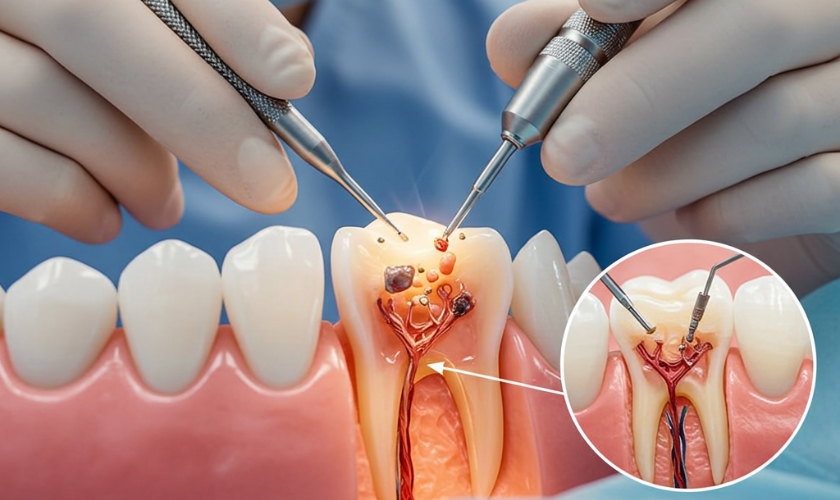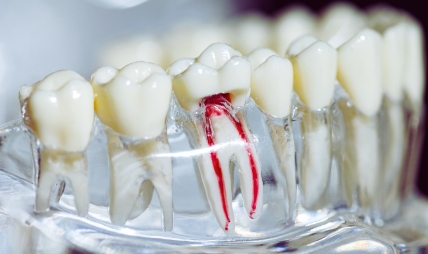8092 Edwin Raynor Blvd # D, Pasadena, MD 21122

A root canal treatment is one of the most common dental procedures, yet many people still have questions and concerns about it. Whether a dentist has advised you to get a root canal or you’re simply curious about what it involves, you’ve come to the right place.
In this blog, we’ll break down everything you need to know about root canal treatment—what it is, when you need it, how dentists perform it, and what to expect during the recovery process.
Why Do You Need a Root Canal?
Dentists typically recommend root canal treatments when a tooth’s pulp becomes infected or inflamed. Common causes include:
- Deep cavities: Untreated cavities that reach the pulp can introduce bacteria into the tooth, causing infection.
- Cracked or chipped teeth: Trauma to the tooth, such as from an accident or grinding, can allow bacteria to enter and infect the pulp.
- Severe tooth decay: If left untreated, decay can spread and affect the inner part of the tooth, necessitating root canal treatment.
The Root Canal Procedure
Many people worry about the pain associated with root canal treatments, but modern dentistry has made the procedure much more comfortable than most expect. Here’s a step-by-step breakdown of what happens during the treatment:
- Diagnosis and X-ray: A dentist or endodontist will take an X-ray of the tooth to assess the extent of the damage and infection.
- Anesthesia: Apply local anesthesia to numb the area around the tooth, ensuring you won’t feel pain during the procedure.
- Tooth preparation: The dentist drills a small hole into the tooth to access the pulp chamber and remove the infected tissue.
- Cleaning and shaping: Cleans and shapes the inside of the tooth to prepare it for sealing, ensuring that no bacteria remain in the area.
- Sealing the tooth: The dentist seals the cleaned tooth with a rubber-like material called gutta-percha to prevent further infection.
- Restoration: In most cases, the tooth will need a crown or filling to restore its shape and function.
Post-Treatment Care and Recovery
After your root canal treatment in Pasadena, you may experience some mild discomfort, but this can usually be managed with over-the-counter pain medication. It’s essential to follow the dentist’s aftercare instructions to ensure proper healing.
Some tips for a smooth recovery include:
- Avoid chewing on the treated tooth until a permanent crown or restoration is placed.
- Follow up with a dental professional for any additional treatments or checkups.
- Maintain good oral hygiene by brushing and flossing daily to avoid future infections.
Each year, dentists across the United States perform nearly 15 million root canal treatments, effectively saving teeth that might otherwise be lost, demonstrating the commonality of this procedure.
Benefits of Root Canal Treatment
Root canal treatment offers several significant benefits, including:
- Pain relief: The main goal of a root canal is to relieve the pain caused by an infected tooth.
- Tooth preservation: By saving the natural tooth, you avoid the need for more invasive procedures, such as implants or bridges.
- Improved oral health: Treating an infected tooth helps prevent the spread of infection to other teeth or surrounding tissue.
- Cost-effective: While root canal treatment may seem costly upfront, it is typically more affordable than tooth extraction and replacement.
If you’re still unsure about whether root canal treatment is the best option for you, don’t hesitate to ask our dentist in Pasadena MD, any questions. They can explain the procedure in more detail and discuss any concerns you may have.
Root canal treatment is a crucial procedure that can save a damaged tooth and alleviate pain caused by infection. While the process may sound intimidating, it’s a standard and effective treatment with a high success rate.
By taking care of your teeth and seeking professional treatment when necessary, you can enjoy a healthy, pain-free smile for years to come.
New Patients & Emergency
Appointments Welcome!
New Patients & Emergency
Appointments Welcome!




